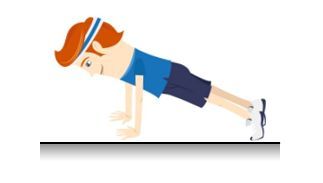The relationship between an object's center of mass and its stability on a surface is crucial in understanding how objects balance. The weight of an object, represented as \( mg \), acts at its center of gravity, which for most practical purposes can be considered the same as the center of mass. This is particularly true for objects with uniform mass distribution, where the mass is evenly spread throughout the object. In such cases, the center of mass is located at the geometric center of the object.
When analyzing whether an object will tilt or remain balanced, it is essential to consider the position of the center of mass relative to the support point. If the center of mass is within the boundaries of the support, the object will remain in static equilibrium and not tilt. Conversely, if the center of mass extends beyond the edge of the support, the object will begin to tilt, indicating that it is no longer in equilibrium.
To determine the center of mass for a system of objects, the formula used is:
\( x_{cm} = \frac{\sum m_i x_i}{\sum m_i} \)
where \( m_i \) represents the mass of each object and \( x_i \) is the position of each object along the x-axis. For two objects, this can be expressed as:
\( x_{cm} = \frac{m_1 x_1 + m_2 x_2}{m_1 + m_2} \)
In practical scenarios, such as a plank supported at two points with a person walking on it, the position of the center of mass changes as the person moves. For example, if a 20 kg plank is 10 meters long and supported at one end and 3 meters from the other end, the center of mass of the system (plank plus person) must remain within the support points to prevent tipping. If the person has a mass of 60 kg, the goal is to find the maximum distance the person can walk to the right of the rightmost support without causing the plank to tip.
By setting the center of mass of the system equal to the position of the rightmost support, we can solve for the maximum distance the person can walk. This involves substituting the known values into the center of mass equation and solving for the unknown distance. The calculations reveal that the person can only walk approximately 0.67 meters beyond the rightmost support before the plank tips, illustrating the significant impact of mass distribution on stability.
Understanding these principles is essential for solving problems related to static equilibrium and the behavior of objects under various conditions. By applying the center of mass concept, one can predict and analyze the stability of different systems effectively.


